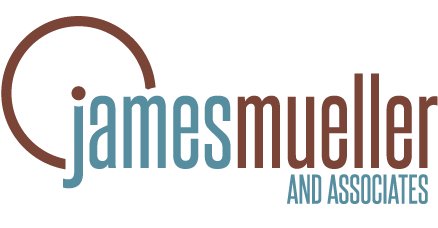Strategic Plan Template & Written Plan
Though the planning template is laid out in phases, strategic planning is not a linear process. It is more of a conversation, with each element informing the other, and through an interactive process, the best strategy to pursue evolves.
A strategic planning process template has three components: information gathering, deliberation, and decision-making.
Information gathering includes the following elements:

Jim Collins writes; “Every company would like to be the best at something, but few actually understand—with piercing insight and egoless clarity—what they actually have the potential to be the best at and, just as important, what they cannot be best at.”
- Stakeholder needs and expectations: Explore needs and expectations through carefully constructed interviews and surveys, beginning with the leaders, key decision-makers, and important stakeholders.
- Competitive challenges and collaborative opportunities: Conduct initial research early in the process to identify those who provide similar products and services in the same marketplace.
- Trends in the profession: Gather research on expert opinions of emerging issues and future directions. It is important to gather these from an objective observer’s point of view.
- Critical External Issues: Assess key external factors that impact your ability to succeed—whether economic, political, legal, social, public opinion/perception, technology, or any other environmental factor that is impacting your ability to succeed.
- Organizational realities: Assess with bold honesty strengths and gaps in staffing, budget, IT, program realities (successes v. expectations), and any other “elephants on the table,” the latter being those things that we need to talk about but like to avoid.
The deliberation phase comprises several exercises that contrast the findings of the environmental scan against organizational aspirations, purpose, and capabilities. We encourage clients to use concepts of design thinking, particularly divergent thinking, and allow a healthy dose of ambiguity early in the process. The exercises include:
- Core competencies (capabilities). Our firm defines core competencies as abilities possessed by members of the organization’s team that consistently deliver expected outcomes at the highest level of performance. As Jim Collins writes; “Every company would like to be the best at something, but few actually understand—with piercing insight and egoless clarity—what they actually have the potential to be the best at and, just as important, what they cannot be best at.” In the planning process, we recommend taking this a step further to define the competencies that are needed and whether you own them, whether they within reach, or whether they need to be developed. Sometimes you need to grow into your new capabilities.
- Value proposition. In its simplest form, a value proposition defines where you have the greatest opportunity with the least competition (for resources and market). We recommend that you expand this to include stakeholder value. I like how Willie Pietersen, Professor of the Practice of Management at Columbia Business School describes it: “What will we do differently or better than our competitors to provide greater customer value and satisfactory financial returns.”
-

We encourage clients to use concepts of design thinking, particularly divergent thinking, and allow a healthy dose of ambiguity early in the process.
Promise to stakeholders is most familiar to those in the not for profit sector because it is mission-based. It is defined through an exercise that explores and answers a handful of critical questions: What is the problem that we solve for our stakeholders? Why/How are we qualified to solve it? What will be improved in the lives of our stakeholders when we succeed? How will we know? How will we measure success?
- Revenue. For profit organizations will look at revenue flow, pricing, new products and services, undervalued assets that may be monetized, the right revenue mix, etc. Not for profit organizations need to additionally consider the following:
- How do we translate our promise to stakeholders into a viable case for financial support? What have our donors told us about their interests? Where are the greatest opportunities for advancement and financial resource development?
- Most not for profits undervalue their assets. So it is important to take a look a what assets have marketable value. What value do we offer to potential funding partners? Where are we uniquely positioned to access revenue from the marketplace? What program/product mix will drive the greatest resource flow?
- And as with for profit entities, what is the right revenue strategy that will lead to the most robust and sustainable program? Most not for profits cannot survive on philanthropy alone.
- As a transition step to the decision making phase, we recommend a risk assessment/risk mitigation discussion. This step is akin to the weaknesses/threats exercise of a SWOT analysis, but is a bit more expansive. This is a discussion of the threats, vulnerabilities, worries, doubts, anxieties, and potential pitfalls that concern the planning team. All of these should be captured and assessed, and mitigation strategies should be developed. It is a mini scenario planning exercise. For each, describe the issue, rate the likelihood that it might appear (1 to 10) and the seriousness of the consequence if it does (1 to 10). Then develop scenarios regarding what the organization will do to lessen the likelihood and/or mitigate the consequence.
Decision-making requires both analytical and intuitive skill.
- All of the work accomplished heretofore prepares the strategic planning team to answer the fundamental question for strategic planning: What are our strategic imperatives? Our firm defines strategic imperatives as clearly defined outcomes that are essential in order for an organization to achieve its vision and aspirations. They define outcomes that will create a substantially different reality as a result of the plan. They are must-have achievements.
- Out of the strategic imperatives flow the “what we will do” and “how we will do it” statements. Though there are a number of ways to cascade these statements from general to specific, we prefer simply: goals, objectives with strategies, (tr)action steps, and success measures. These are organized departmentally in a way that makes most sense to the organization, but there is a hierarchy. The most important goals are those that define what you deliver to your stakeholders through programs and services. All other goals are subsidiary to these. The subsidiary goals might be organized by communication, marketing, fundraising, infrastructure, finance, etc.
Though we counsel every organization to engage in this thorough process, we also understand the realities faced by those responsible for planning. To succeed, planners must achieve buy in from key decision-makers and cultivate intellectual and emotional engagement in the process. Bringing in an outside expert can help planners achieve the most substantive and useful process that delivers the best results.
In part three of this post I will outline a template for the written plan.

